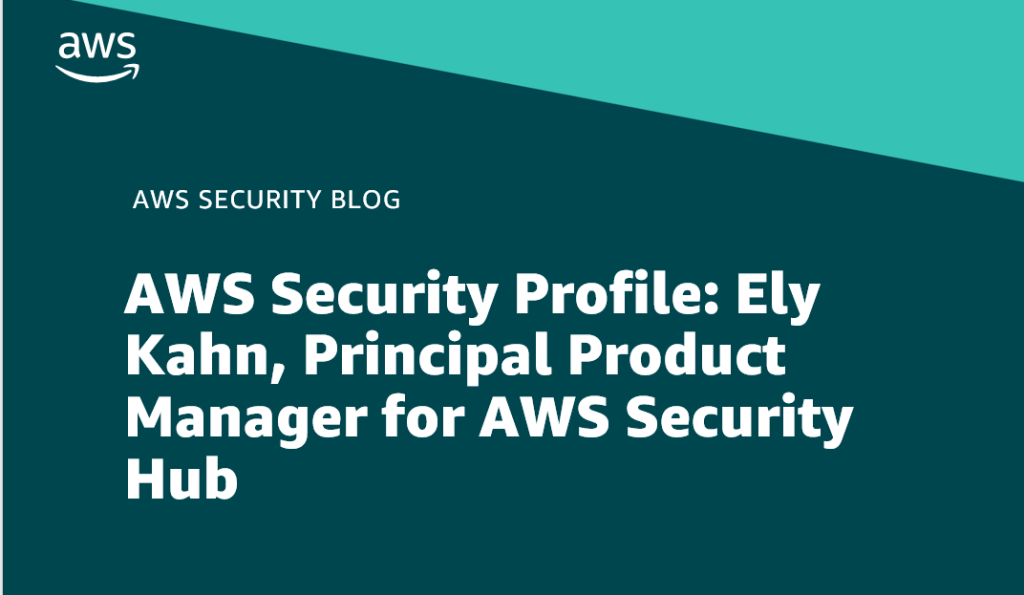AWS Security Blog
Category: Security, Identity, & Compliance
Correlate IAM Access Analyzer findings with Amazon Macie
In this blog post, you’ll learn how to detect when unintended access has been granted to sensitive data in Amazon Simple Storage Service (Amazon S3) buckets in your Amazon Web Services (AWS) accounts. It’s critical for your enterprise to understand where sensitive data is stored in your organization and how and why it is shared. […]
AWS CSA Consensus Assessment Initiative Questionnaire version 4 now available
Amazon Web Services (AWS) has published an updated version of the AWS Cloud Security Alliance (CSA) Consensus Assessment Initiative Questionnaire (CAIQ). The questionnaire has been completed using the current CSA CAIQ standard, v4.0.2 (06.07.2021 update), and is now available for download. The CSA is a not-for-profit organization dedicated to “defining and raising awareness of best […]
Join me in Boston this July for AWS re:Inforce 2022
I’d like to personally invite you to attend the Amazon Web Services (AWS) security conference, AWS re:Inforce 2022, in Boston, MA on July 26–27. This event offers interactive educational content to address your security, compliance, privacy, and identity management needs. Join security experts, customers, leaders, and partners from around the world who are committed to […]
When and where to use IAM permissions boundaries
Customers often ask for guidance on permissions boundaries in AWS Identity and Access Management (IAM) and when, where, and how to use them. A permissions boundary is an IAM feature that helps your centralized cloud IAM teams to safely empower your application developers to create new IAM roles and policies in Amazon Web Services (AWS). […]
How to use AWS KMS RSA keys for offline encryption
October 28, 2022: This blog post has been updated to reflect that CBC has changed to CTR, as well as a few more modifications. This blog post discusses how you can use AWS Key Management Service (AWS KMS) RSA public keys on end clients or devices and encrypt data, then subsequently decrypt data by using […]
How to use regional SAML endpoints for failover
August 10, 2022: This blog post has been updated to reflect the new name of AWS Single Sign-On (SSO) – AWS IAM Identity Center. Read more about the name change here. Many Amazon Web Services (AWS) customers choose to use federation with SAML 2.0 in order to use their existing identity provider (IdP) and avoid […]
Spring 2022 SOC 2 Type I Privacy report now available
Your privacy considerations are at the core of our compliance work at Amazon Web Services (AWS), and we are focused on the protection of your content while using AWS services. Our Spring 2022 SOC 2 Type I Privacy report is now available, which provides customers with a third-party attestation of our system and the suitability […]
Spring 2022 SOC reports now available with 150 services in scope
At Amazon Web Services (AWS), we’re committed to providing our customers with continued assurance over the security, availability and confidentiality of the AWS control environment. We’re proud to deliver the Spring 2022 System and Organizational (SOC) 1, 2 and 3 reports, which cover October 1, 2021 to March 31, 2022, to support our AWS customers’ […]
AWS Security Profile: Ely Kahn, Principal Product Manager for AWS Security Hub
In the AWS Security Profile series, I interview some of the humans who work in Amazon Web Services Security and help keep our customers safe and secure. This interview is with Ely Kahn, principal product manager for AWS Security Hub. Security Hub is a cloud security posture management service that performs security best practice checks, […]
Choosing the right certificate revocation method in AWS Private CA
June 25, 2025: As of Sept 28, 2022, AWS has changed the name of ACM Private CA to AWS Private CA. This post has been updated to reflect this change. AWS Private Certificate Authority (AWS Private CA) is a highly available, fully managed private certificate authority (CA) service that allows you to create CA hierarchies […]








